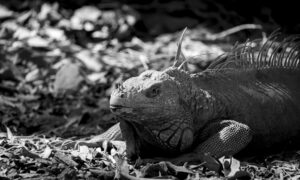
Recognized as a UNESCO World Heritage Site, Ha Long Bay is one of Vietnam’s top destinations, attracting both domestic and international tourists. It offers a stunning combination of unspoiled natural beauty and a vibrant city atmosphere.
Situated in a region known for tourism, marine transport, and fisheries, Ha Long Bay retains its breathtaking natural splendor. The name “Ha Long” translates to “Descending Dragon,” originating from an ancient legend about dragons protecting the land.
Geographically, Ha Long Bay consists of a vast limestone island complex located in the Gulf of Tonkin, within Quang Ninh Province, about 170 kilometers from Hanoi. It is bordered by Bai Tu Long Bay to the northeast, Cat Ba Archipelago, and Lan Ha Bay to the south and east, forming an interconnected system of natural wonders.
The bay’s distinctive beauty, characterized by towering limestone karsts, rightfully earns it a place on the UNESCO World Heritage list. There are nearly 1,600 islands in the bay, shaped over 500 million years by tropical weathering. Many of these islands feature caves, which visitors can explore through guided tours, while some of the larger ones even contain hidden lakes.
At the heart of Ha Long Bay, a collection of 775 limestone formations spans an area of 330 square kilometers. Traditional Vietnamese junk boats offer an immersive way to explore these islands, caves, and the floating fishing communities scattered throughout the bay.
One of the most popular destinations within Ha Long Bay is Cat Ba Island. Most tour companies include a visit to this island, which offers a mix of hotels, restaurants, and bars. Despite the modern development, the island’s residents continue their age-old fishing traditions, making it an excellent place to experience local life while enjoying modern comforts.
Another notable landmark is Trong Mai Islet, located southwest of Ha Long Bay, near Dinh Huong Island. Approximately five kilometers from Bai Chay Tourist Wharf, this unique rock formation resembles two chickens—a rooster and a hen—facing each other. According to local folklore, these “kissing chickens” have stood together for thousands of years, symbolizing unwavering love and devotion.
A fascinating legend surrounds Ha Long Bay’s origins. It tells the story of a powerful dragon mother and her children, sent by the highest god to help the Vietnamese people defend their homeland from invaders. Once victorious, the dragons chose to remain, mesmerized by the bay’s beauty. The god sent two chickens to bring them back, but the birds themselves became so enchanted that they, too, stayed and eventually turned to stone.

Ha Long Bay’s floating villages and fish farms are among its most intriguing attractions. These communities have thrived for generations, relying on fishing as their primary livelihood. On the same island as Virgin Cave, the impressive Hung Sung Sot Cave is another must-visit site. The cave features a steep entrance surrounded by lush trees, leading to two chambers—one square-shaped with a towering ceiling and another filled with formations resembling figures engaged in conversation. A prominent structure in the center of the cave appears like a general observing his troops, brought to life by the reflection of light from the outside ocean.
Given its unparalleled beauty, Ha Long Bay draws visitors from across the globe. Despite its popularity, careful selection of a cruise or tour can ensure a peaceful and unforgettable experience. A highlight of any visit is sampling the region’s renowned seafood. One of the top delicacies is “cha muc,” or grilled chopped squid. This specialty, made from freshly caught squid, is hand-ground and fried to perfection, creating a crispy exterior with a flavorful, juicy interior.
Another highly recommended dish is “sam,” or horseshoe crab, which thrives in the shallow waters of Ha Long Bay. This seafood delicacy is prepared in various ways, including crab salad, sweet and sour crab, steamed crab, and fried crab with glass noodles. In addition, fresh prawns and lobster are a must-try. Served straight from the sea, they pair perfectly with beer or vodka for an authentic Vietnamese experience.
Oysters are another prized seafood option in Ha Long Bay. Freshly caught daily, they are either grilled over charcoal and seasoned with salt, pepper, and lemon or served raw with a slice of lemon for a refreshing taste.
As the sun sets, Ha Long Bay transforms into an enchanting spectacle. The final rays of sunlight turn the sea into a shimmering shade of crimson, before giving way to the silvery glow of the moonlit water. The reflections of Ha Long City’s lights create a mesmerizing scene, making every island, cave, and beach feel like part of an ancient love story. Ha Long Bay is more than just a tourist attraction—it is a place steeped in legend, natural wonder, and cultural heritage, offering visitors an unforgettable journey into the heart of Vietnam’s beauty and history.






